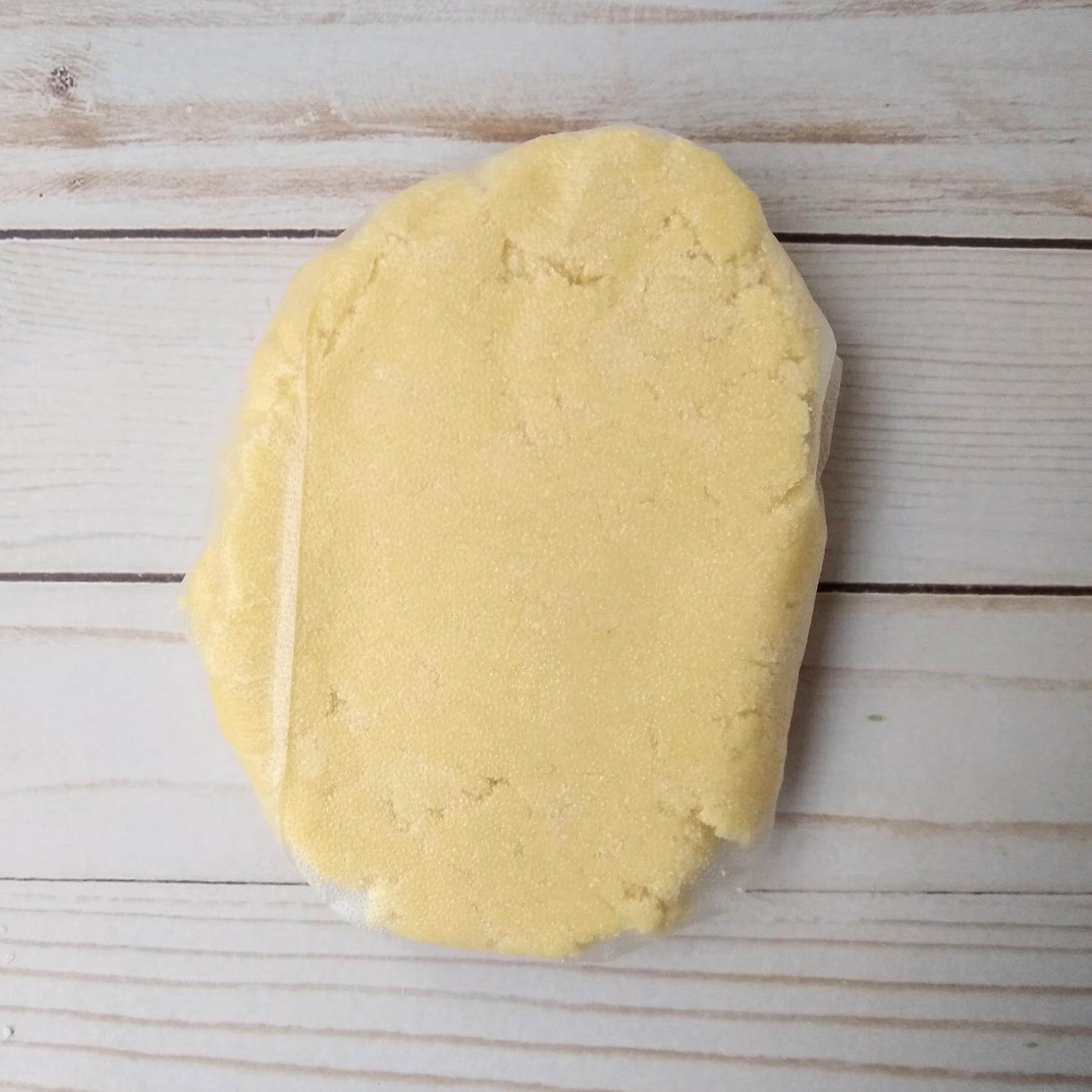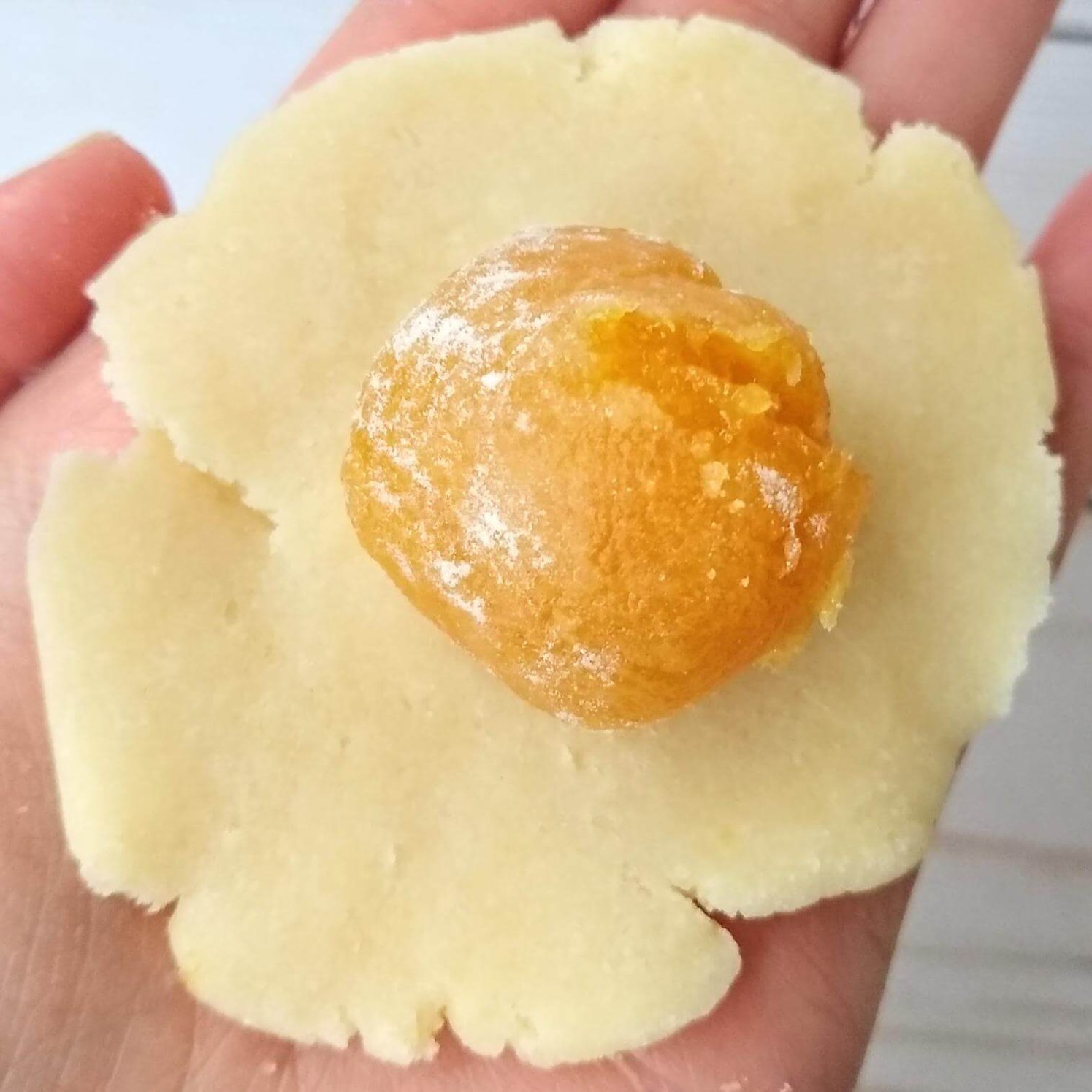Taiwanese Pineapple Cake (鳳梨酥, Feng Li Su)
Taiwanese pineapple cake pastries have a soft, buttery exterior and fragrant, slightly tart pineapple filling. This delicious dessert is commonly gifted during the Lunar New Year.

Taiwanese pineapple cakes, 鳳梨酥, are one of the most recognizable Taiwanese desserts (aside from boba). A box of these pastries is commonly bought as a gift for the Lunar New Year. One of the most famous brands of pineapple cake is ChiaTe, which attracts long queues of customers for their desserts.
These pastries feature a soft, flaky shortbread exterior and a fragrant, slightly tart pineapple filling. A traditional Taiwanese pineapple cake recipe includes maltose in the filling, which is a type of sweetener. Maltose is very sticky and thick. It is also much less sweet compared to other sweeteners. Several traditional Chinese/Taiwanese sweets use maltose to help bind and sweeten the dish, such as sweet red bean paste.
This recipe is not my own but rather a variation of this video from the YouTube channel Amanda Tastes. I like it because it does not require a Taiwanese pineapple cake mold to bake the pastries in. After making it a few times, I made some tweaks to make the dough less sticky and learned some tips (listed below) to troubleshoot mistakes.
Recipe Tips and Notes
- Maltose Syrup: Maltose can be very difficult to handle. Warming up the maltose will loosen it, making it easier to handle. If you don’t have maltose, you can try substituting corn syrup. Make sure to use less than 50 grams of corn syrup because corn syrup is much sweeter than maltose.
- Milk Powder: If you do not have milk powder, you could substitute it with cake flour. However, the pineapple cake won’t brown as much when baking.
- Pineapple Filling: The coarser the pineapple filling is, the better it retains water. So, you will need to cook out less water. This can also help prevent the filling from expanding while baking, which can cause the crust to crack.
- Sticky Dough: If the outside dough starts to warm up while you work it and become sticky, simply place it in the fridge for a few minutes to let it harden slightly.
- Cracks in the Crust Forming While Baking: There are a few reasons why pineapple cakes may start to bulge out and crack while baking.
- Too much moisture: If the pineapple filling wasn’t cooked long enough, then the excess moisture will turn to steam in the hot oven, causing the filling to bulge and crack the exterior.
- To solve: If you are noticing cracks forming on the surface before the crust is browning, try refrigerating/freezing the cakes for a bit before baking for the remaining time. Colder filling takes longer to heat up (and thus expand)
- Uneven wrapping: If wrapped unevenly, thinner areas of crust can crack more easily.
- Too much moisture: If the pineapple filling wasn’t cooked long enough, then the excess moisture will turn to steam in the hot oven, causing the filling to bulge and crack the exterior.
- If you are able, wait 1-2 days before eating the baked pineapple cakes to allow the shortbread crust to soften and become more buttery. (also known as 出油, or to “produce oil”)
Taiwanese Pineapple Cake (鳳梨酥, Feng Li Su)
Ingredients
Filling
- 750 g ripe pineapple
- 50 g sugar 1/4 cup, plus more to taste
- 50 g maltose syrup 1/7 cup, *Note 1
Crust
- 100 g butter room temperature (~7 tbsp)
- 25 g sugar 2 tbsp
- 1/4 tsp salt
- 1 egg yolk
- 125 g cake flour around 1 cup
- 25 g milk powder *Note 2
Instructions
Prep the Filling
- Core and roughly chop the pineapple either by hand or in a food processor/blender. *Note 3
- Pour the pineapple into a nonstick pan and add in the sugar. Bring to a boil and then lower the heat to medium.
- Let the mixture bubble and reduce, stirring occasionally to prevent the filling from sticking to the bottom and burning. Cook until there is no excess juice left in the pan (about 30 minutes).
- Add in the maltose. Reduce the heat to medium-low and keep cooking until the mixture is caramelized and thick (about 10-15 minutes). The filling should almost be dough-like. Taste and add more sugar if needed.
- Spread the filling on a plate and refrigerate to cool down.
- Divide the cooled filling into 20 portions and roll into balls. The filling will be sticky but should hold its shape well. Optionally sprinkle with flour to prevent sticking. (~18 grams)
Prep the Crust
- Cream the butter, sugar until the mixture is fluffy and lightens in color, around 3 minutes. Mix in the egg yolk.
- Add the milk powder and cake flour into the bowl and mix gently to combine.
- Wrap the dough with cling wrap. Refrigerate for 20-30 minutes to make it easier to handle.
- Now the dough should be soft to the touch. Divide it into 20 pieces.
Assemble
- Roll a dough piece into a ball. Press down in the middle and thin out the edges to make a bowl shape. Place a pineapple filling ball in the center.
- Push the sides of the dough upward to wrap the filling and seal it closed. Place the pineapple cake into a pineapple cake mold or use your hands to shape it into a rectangle/square shape. *Note 4
Bake
- Place the pineapple cake on a parchment-lined baking sheet. Bake in a preheated 350 F oven for 8 minutes.
- Gently flip the cakes over and bake for another 6-8 minutes at 350 F or until golden on both sides. Note 5
- Let the cake cool before storing it in an air-tight container. If you are able, wait 1-2 days before eating the cakes to allow the shortbread crust to soften and become more buttery.
Notes
- Maltose Syrup: Maltose can be very difficult to handle. Warming up the maltose will loosen it, making it easier to handle. If you don’t have maltose, you can try substituting corn syrup. Make sure to use less than 50 grams of corn syrup because corn syrup is much sweeter than maltose.
- Milk Powder: If you do not have milk powder, you could substitute it with cake flour. However, the pineapple cake won’t brown as much when baking.
- Pineapple Filling: The coarser the pineapple filling is, the better it retains water. So, you will need to cook out less water. This can also help prevent the filling from expanding while baking, which can cause the crust to crack.
- Sticky Dough: If the outside dough starts to warm up while you work it and become sticky, simply place it in the fridge for a few minutes to let it harden slightly.
How to Make Taiwanese Pineapple Cake
Prep the Filling
Core and roughly chop the pineapple either by hand or in a food processor/blender. Pour the pineapple into a nonstick pan and add in the sugar. Bring to a boil and then lower the heat to medium.


Let the mixture bubble and reduce, stirring occasionally to prevent the filling from sticking to the bottom and burning. Cook until there is no excess juice left in the pan (about 30 minutes). Add in the maltose. Reduce the heat to medium-low and keep cooking until the mixture is caramelized and thick (about 10-15 minutes). The filling should almost be dough-like. Taste and add more sugar if needed.


Spread the filling on a plate and refrigerate to cool down. Divide the cooled filling into 20 portions and roll into balls. The filling will be sticky but should hold its shape well. Optionally sprinkle with flour to prevent sticking.

Prep the Crust
Cream the butter, sugar until the mixture is fluffy and lightens in color, around 3 minutes. Mix in the egg yolk. Add the milk powder and cake flour into the bowl and mix gently to combine.



Wrap the dough with cling wrap. Refrigerate for 20-30 minutes to make it easier to handle. Now the dough should be soft to the touch. Divide it into 20 pieces.


Assemble
Roll a dough piece into a ball. Press down in the middle and thin out the edges to make a bowl shape. Place a pineapple filling ball in the center. Push the sides of the dough upward to wrap the filling and seal it closed. Place the pineapple cake into a pineapple cake mold or use your hands to shape it into a rectangle/square shape.


Bake
Place the pineapple cake on a parchment-lined baking sheet. Bake in a preheated 350 F oven for 8 minutes. Gently flip the cakes over and bake for another 6-8 minutes at 350 F or until golden on both sides. Let the cake cool before storing it in an air-tight container. If you are able, wait 1-2 days before eating the cakes to allow the shortbread crust to soften and become more buttery.







